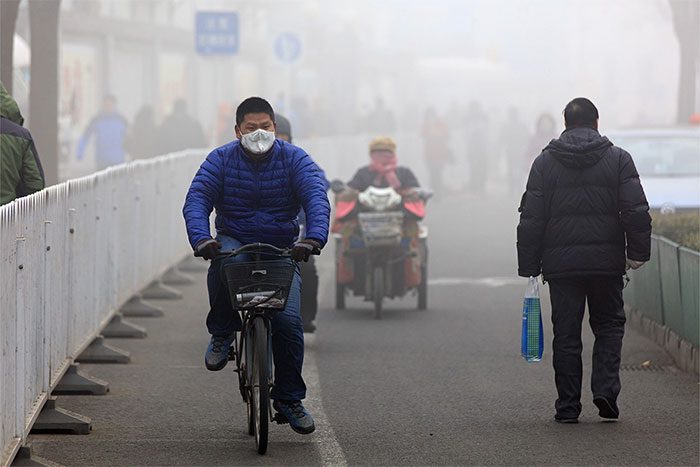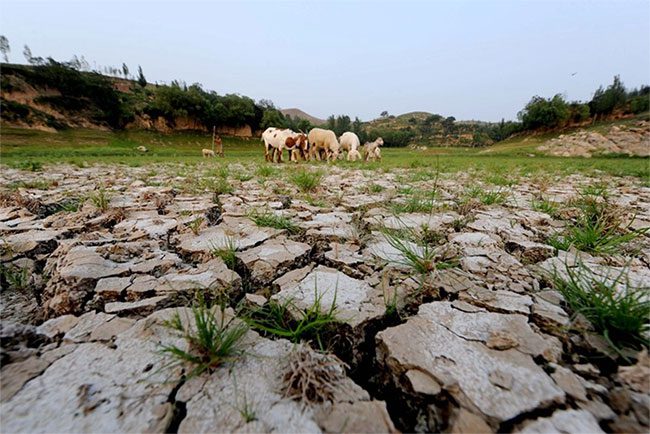A new study warns that Beijing, Tianjin, and five neighboring provinces in China could face 22 days of extreme heat and ozone pollution annually between 2046 and 2050, according to SCMP.
The dual environmental impact has increased the early mortality rate in the vast region known as the North China Plain—which includes Beijing, the nearby port city of Tianjin, and five surrounding provinces. By 2050, this area will be the most severely affected region in China by ozone pollution and extreme high temperatures, as reported in a peer-reviewed study published in the Journal of Atmospheric Chemistry and Physics.
Professor Wang Pinya at Nanjing University of Information Science and Technology, the lead author, stated: “The results indicate that with global warming and increasing heatwaves, the occurrence of extreme temperatures and ozone pollution is projected to become more frequent in 2046-2050 compared to current levels in China.”
She emphasized that it is crucial for the government to double its efforts to mitigate climate change and reduce air pollution emissions to lower ozone pollution levels by the end of the century.

The North China Plain will be the most severely affected region in China by ozone pollution. (Photo: Geographical).
In contrast to ozone in the stratosphere [natural ozone (O3)], which absorbs harmful ultraviolet radiation from the sun and protects life on Earth, ozone in the troposphere is a greenhouse gas and a harmful pollutant that can damage human health as well as crops and ecosystem productivity.
Since 1990, a significant portion of emissions from human activities has contributed to the formation of harmful ground-level ozone. Ground-level ozone is formed when sunlight interacts with nitrogen oxides (NOx) and volatile organic compounds emitted by power plants, factories, vehicles, and other sources.
It is a harmful air pollutant at ground level, and prolonged exposure to high concentrations of ozone can severely damage not only human health (causing lung injuries…) but also vegetation and ecosystems.
Ozone pollution often coincides with high temperatures, low humidity, and weak winds. While most previous studies have considered the individual impacts of extreme high temperatures or ozone pollution, researchers from the U.S. and China, led by Professor Wang Pinya, have examined the cumulative effects of extreme phenomena in both areas [extreme temperatures and ozone pollution].
The study shows that their combined impact will lead to higher mortality rates than ozone pollution or extreme temperatures alone.
100 daily deaths from 2017-2019 & beyond
Approximately 100 daily deaths during the period from 2017 to 2019 in the North China Plain—a key agricultural area home to about 400 million people—could be attributed to the simultaneous effects of excessively high temperatures and surface ozone levels, estimated Professor Wang and colleagues.
Ozone pollution has become a serious environmental issue in major cities across China over the past decade.

Sheep grazing in a water reservoir during a drought in Henan Province, China. (Photo: Xinhua)
China’s 2013 action plan to reduce emissions has decreased levels of many air pollutants, including sulfur dioxide (SO2), nitrogen oxides, black carbon, and fine particulate matter (PM2.5). However, surface ozone concentrations have been trending upward from 2013 to 2017, according to the research.
The study indicates that during the warm season from April to September in 2013-2017, the average annual increase in ozone concentration far exceeded the rate in neighboring countries like Japan or South Korea.
Chinese and American researchers noted that the North China Plain, covering 14 million hectares, is a hotspot for extreme temperatures and ozone pollution in China.
From 2014 to 2019, this plain recorded about 40 days of extreme heat and ozone pollution, nearly 7 days each year.
Worryingly, such dual impacts could increase to 110 days between 2046-2050—an average of 22 days annually (meaning an increase of 15 days compared to the period from 2014-2019), according to one of the four forecasts by the researchers.
Scientists warn that the increase in such dual impacts by 2050 is certain in all four scenarios, despite pollution mitigation measures. Therefore, the number of deaths from extreme heat and ozone pollution could rise even further.
The study concludes: “Our results reinforce the view that climate actions are deemed crucial to help our communities become less vulnerable to the impacts of climate change and global warming.”


















































